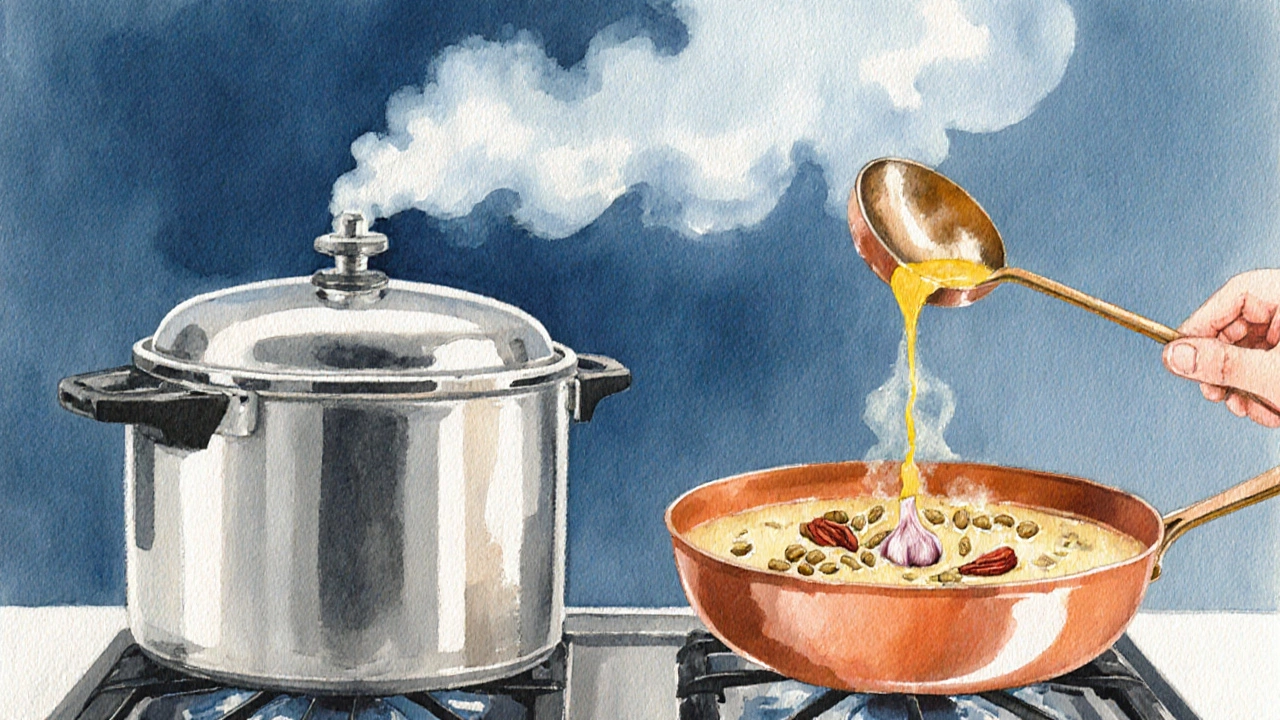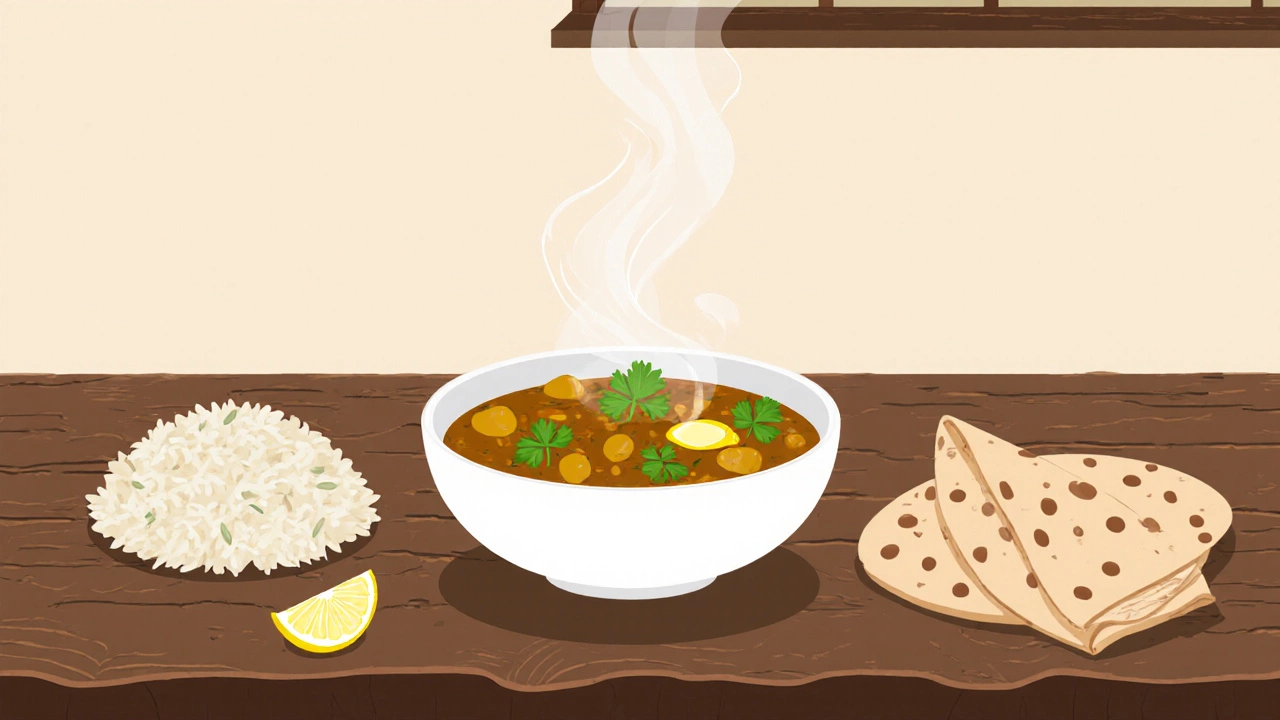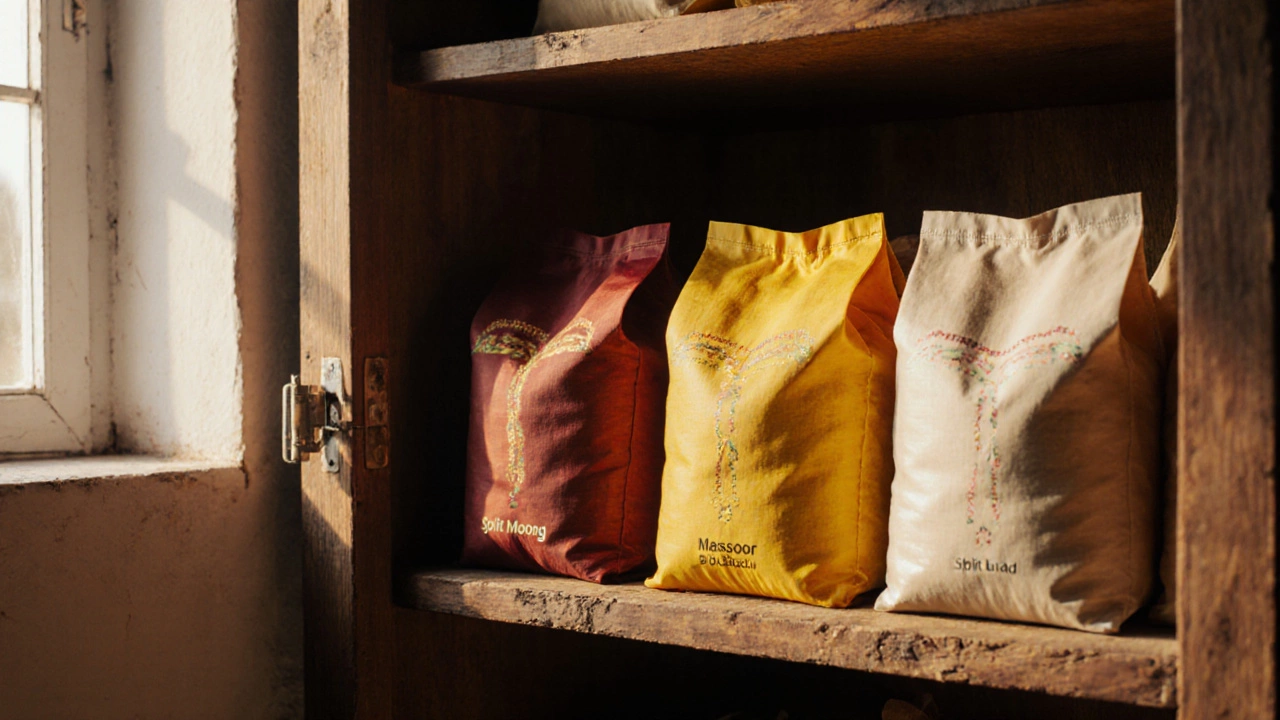No-Soak Dal Cooking Time Calculator
Calculate Cooking Time
Select your dal and cooking method to get precise timing estimates
Estimated Cooking Time
Enter dal type and cooking method to see results
Ever opened your pantry, spotted a bag of dal, and thought, “I’ll need to soak this first”? If you’re short on time, the good news is that several dal varieties cook perfectly without any pre‑soak. Knowing which ones skip the soaking step lets you whip up a hearty bowl in minutes, whether you’re using a pressure cooker, an Instant Pot, or just a regular saucepan.
Quick Takeaways
- Dal without soaking is possible with split yellow moong, red masoor, and split urad.
- On the stovetop, these dal cook in 10‑20 minutes; in a pressure cooker they finish in 5‑8 minutes.
- Adding a pinch of baking soda or hot water can shave a few minutes off the cooking time.
- Flavor‑boosting tricks (tempering, ginger‑garlic paste, tomatoes) work just as well with no‑soak dal.
- Instant Pot or electric pressure cooker is the fastest, most fool‑proof method.
Dals That Don’t Need Soaking
The following lentils are naturally split and husked, which means they absorb water quickly and soften without a soaking period.
- Moong dal is a split yellow gram that cooks in about 10‑12 minutes on the stovetop or 5 minutes in a pressure cooker.
- Masoor dal (red lentils) softens in 8‑10 minutes without any soak.
- Split urad dal (white black‑gram) needs only 12‑15 minutes on the stovetop.
- Toor dal (pigeon pea) can be cooked without soaking, but expect a longer simmer-about 25‑30 minutes.
- Chana dal (split Bengal gram) does fine without soaking, though it takes 20‑25 minutes.
Whole lentils (like whole moong or whole urad) still benefit from a brief soak, but the split versions listed above are your go‑to when the clock is ticking.
Cooking Times & Methods
Understanding how each cooking appliance influences time helps you plan meals better.
| Dal | Soak Needed? | Stovetop (min) | Pressure Cooker (min) | Instant Pot (min) |
|---|---|---|---|---|
| Moong dal | No | 10‑12 | 5‑6 | 4‑5 |
| Masoor dal | No | 8‑10 | 4‑5 | 3‑4 |
| Split urad dal | No | 12‑15 | 6‑7 | 5‑6 |
| Toor dal | Optional | 25‑30 | 12‑14 | 10‑12 |
| Chana dal | Optional | 20‑25 | 10‑12 | 9‑11 |
Notice how the pressure cooker and Instant Pot cut cooking time roughly in half. If you own one, it becomes the easiest way to prepare a no‑soak dal without watching the pot.

Simple No‑Soak Dal Recipes
1. Quick Moong Dal Tadka
- Rinse 1 cup Moong dal under cold water.
- In a saucepan, combine the dal with 2½ cups water, a pinch of turmeric, and a pinch of salt.
- Bring to a boil, then lower the heat and simmer for 10‑12 minutes, stirring occasionally.
- Meanwhile, heat 1 tbsp ghee in a small pan. Add ½ tsp cumin seeds, 2 dried red chilies, a pinch of asafoetida, and 1 minced garlic clove. Fry for 30 seconds.
- Pour the hot tempering over the cooked dal, stir, and serve with steamed rice or roti.
2. Red Lentil (Masoor) Tomato Soup
- Rinse 1 cup Masoor dal.
- Sauté 1 tbsp oil, 1 tsp mustard seeds, 1 chopped onion, and 1 tsp ginger‑garlic paste until golden.
- Add 1 cup diced tomatoes, ¼ tsp chili powder, and cook for 2 minutes.
- Stir in the dal, 3 cups water, and a pinch of salt. Bring to a boil.
- Reduce heat and simmer for 8‑10 minutes until the dal breaks down, creating a creamy soup.
- Finish with a squeeze of lemon and fresh cilantro.
Both recipes require no soaking, minimal prep, and finish in under 20 minutes.
Tips to Speed Up Cooking Even More
- Hot water start: Adding boiling water instead of cold water can shave 2‑3 minutes off the stovetop time.
- Baking soda boost: A pinch (about ¼ tsp) of baking soda neutralizes the natural coating, letting the dal soften faster. Use sparingly; too much changes flavor.
- Lid on, steam out: Keep the pot covered while cooking. The trapped steam raises the internal temperature and reduces cooking time.
- Pre‑toast dal: Lightly toasting dal in a dry pan for 2 minutes adds depth and also speeds up moisture absorption.
- Use a pressure cooker. Modern stovetop pressure cookers reach 15 psi, which is the sweet spot for split lentils.
Common Mistakes to Avoid
Even with no‑soak dal, a few pitfalls can turn a smooth dish into a mushy mess.
- Over‑cooking: Split dal turns into a puree after 20 minutes on high heat. Switch to low simmer once the water is absorbed.
- Skipping the rinse: Unwashed dal holds dust and tiny stones. A quick rinse under running water removes impurities.
- Ignoring the salt timing: Adding salt at the start can toughen the dal’s outer layer. Sprinkle salt halfway through the cooking process.
- Using too little water: No‑soak dal still needs generous liquid - roughly 2½‑3 cups per cup of dal. Otherwise it will stick and burn.

Mini‑FAQ
Frequently Asked Questions
Do I really need to soak any dal?
Most split dal varieties (moong, masoor, split urad) cook fine without soaking. Whole lentils and some larger dal benefit from a short 30‑minute soak, but it isn’t mandatory.
Can I use a regular saucepan instead of a pressure cooker?
Yes. Expect longer cooking times - roughly double - and keep the pot partially covered to retain heat.
What’s the best oil for tempering no‑soak dal?
Ghee adds richness, but a neutral oil like canola or sunflower works well. For a smoky flavor, use a teaspoon of mustard oil.
How can I keep the dal from turning mushy?
Monitor the water level closely. When the dal is just tender, turn off the heat and let it sit covered for 5 minutes. The residual steam finishes cooking without breaking down the grains.
Is it safe to add baking soda to dal?
A tiny pinch is safe and speeds softening, but too much can give a metallic taste and alter the texture.
Next Steps & Troubleshooting
If your dal turns out too thick, simply stir in a splash of hot water and cover for a minute. If it’s too watery, uncover and simmer on low heat until it reaches the desired consistency. For a richer flavor, add a tablespoon of coconut milk or a dollop of yogurt at the end of cooking.
Now you have a clear list of dal that don’t need soaking, quick cooking methods, and two simple recipes to get you started. Grab a pot, choose your favorite no‑soak dal, and enjoy a comforting bowl in no time.
